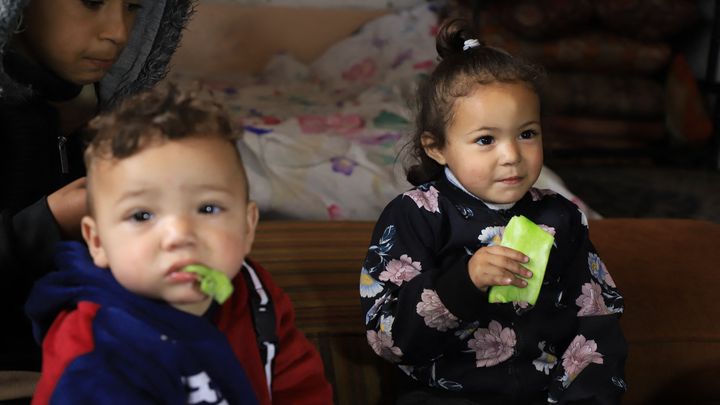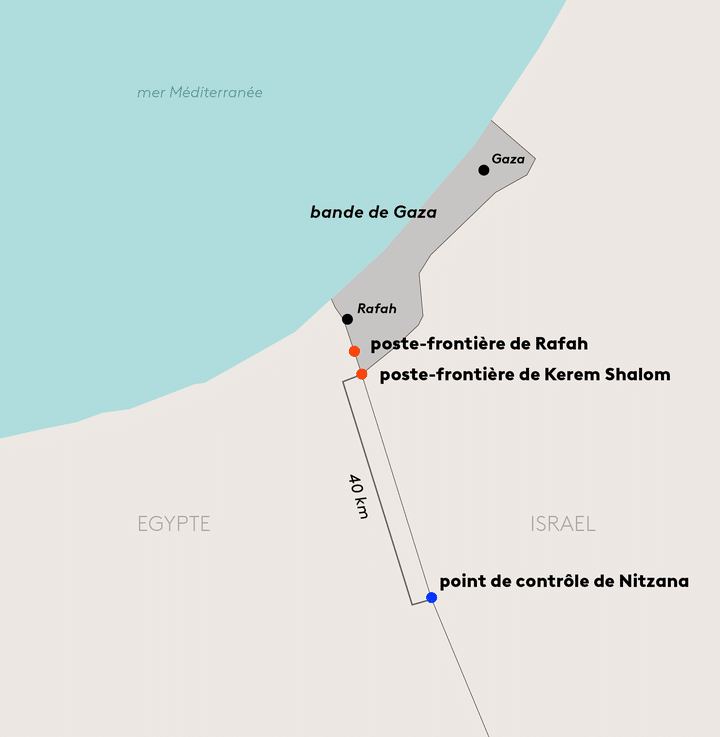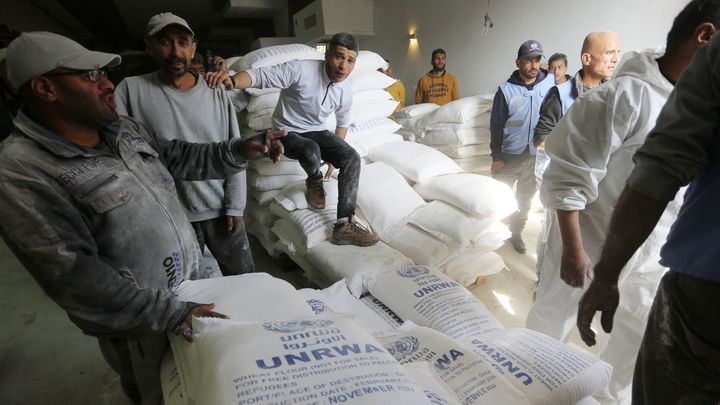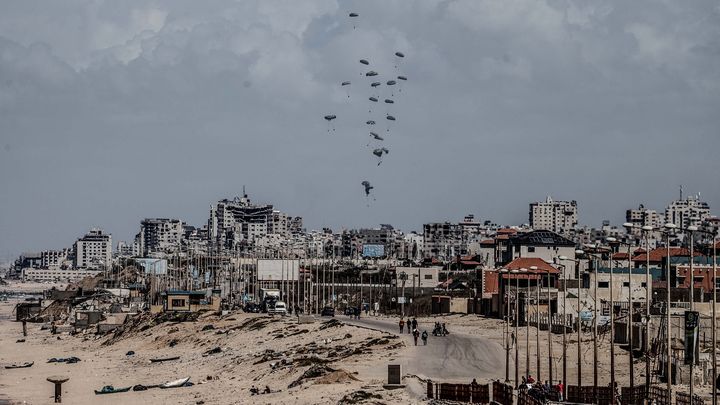Famine could rage in the territory by May, according to international agencies. The cause, in particular: the too slow entry of food aid.
“Israel is causing a famine.” The head of European diplomacy, Josep Borrell, on Monday March 18, accused Tel Aviv of using food shortages “as a weapon of war” in the Gaza Strip. More than 1.1 million inhabitants are faced with “a catastrophic hunger situation”according to a report of the Integrated Food Safety Classification Framework (CPI). And the entire population of the Palestinian territory is now affected by “acute food insecurity”reveals the document published Monday.
“Almost all families skip meals daily and adults reduce their portions so children can eat”, illustrates Jonathan Crickx, spokesperson for Unicef Palestine. It can take Gazans hours to find food, and meager meals are often supplemented with “plants and herbs”, or even cereals previously used for animals. The shortage is particularly critical in the north of the enclave, where “one in three children suffer from acute malnutrition”, specifies Jonathan Crickx. In “two thirds of households” of this region, “residents have spent the day without eating at least ten times” over the last month.

Without action “urgent”famine will rage in the Gaza Strip by May, estimates the UN. CPI define this situation as “a state of extreme food deprivation”leading to an increase in mortality, an extreme lack of food for at least 20% of households and acute malnutrition in at least 30% of children. “It normally takes years… Here we are talking about a famine in less than four months, it is an artificially created crisis”the head of the UN Agency for Palestinian Refugees (UNRWA) ruled on Monday.
More than 1,000 trucks stuck at the border
This humanitarian catastrophe is caused by “an accumulation of shortages since October”, confirms Lucile Marbeau, spokesperson for the International Committee of the Red Cross (ICRC) in France. Before the start of the war, the Gaza Strip was already under an Israeli blockade. To ensure the survival of the inhabitants of the enclave, “An average of 500 trucks entered there every day, including 150 carrying food”, underlines Jonathan Fowler, spokesperson for UNRWA. The others transported fuel, medical equipment or commercial products.
But after the Hamas attacks, Tel Aviv imposed a “total seat” to the territory. Even when heavy goods vehicles were allowed to cross the border again, after two weeks, food deliveries were severely reduced. In early March, an average of only 160 humanitarian aid trucks entered the Gaza Strip each day, according to Jonathan Fowler. “It is absolutely insufficient”denounces the spokesperson for UNRWA, who recalls that “no more commercial products” is not imported. “It’s mathematical: if we don’t reach the number of 500 trucks needed to meet the needs of the population, food reserves are doomed to run out.”
“The more time passes without ensuring the minimum threshold of deliveries of food and drinking water, the more famine becomes inevitable. The only question is when it will begin.”
Jonathan Fowler, UNRWA spokespersonat franceinfo
Humanitarians say they have enough food to meet the needs of the population. But the precious cargoes are blocked at the gates of the Gaza Strip. “Humanitarian aid only enters through two crossing points [terrestres] : Rafah and Kerem Shalom”, in the South, notes Jonathan Crickx, of Unicef Palestine. Before being allowed to cross the border, vehicles must be inspected by the Israeli army at Kerem Shalom or at the Nitzana checkpoint, 40 kilometers away, reports the New York Times. “There are a lot of administrative procedures, limited operating hours during the day and long checks”notes Jonathan Fowler.

A single item can lead to the rejection of an entire shipment. In mid-March, a truck had to turn around because it contained scissors “used in pediatric equipment kits”regretted the Commissioner General of UNRWA on the social network “dual-use”banned from entering the Gaza Strip because they could be used by terrorist groups.
The army says it only refuses access to 1.5% of heavy goods vehicles, relays New York Times. But the controls are so tedious that “hundreds of trucks waiting at the border”, notes Jonathan Crickx. Some 1,200 were waiting in Egypt on Tuesday, according to the New York Times, including 800 food aid workers.
The challenge of food distribution
The difficulties do not end once the border is crossed. “Due to restrictions on trucks operating in the Gaza Strip, food must be unloaded” upon their arrival in the enclave and “recharged on board other vehicles”, explains Jonathan Crickx. Their transport is also complicated by the damage caused by bombing on the roads. “The companies and drivers who agree to operate in Gaza are also few, due to insecurity and the risk of damage to vehicles”continues the spokesperson for Unicef Palestine.
Faced with the threat of “finding yourself in the middle of fighting”, humanitarian workers have great difficulty moving around within the Gaza Strip, testifies Lucile Marbeau. At the end of February, an UNRWA convoy was hit by Israeli naval fire in the north of the enclave, an agency official said. on the social network However, international law requires “to all parties to the conflict, notably Israel, to guarantee the safe movement of humanitarian operators”, recalls Lucile Marbeau.

The northern Gaza Strip, in particular, is almost inaccessible. Face “to chaos and violence” which reign, the World Food Program (WFP) was forced to suspend its food deliveries there at the end of February. “Civilians are hungry, and we have seen several signs of their desperation, with incidents and deaths during convoys passing through this region, deplores Lucile Marbeau. No one should die trying to feed their family, or have to fight for food.”
“The only way to prevent famine is to stop the fighting”
Faced with these multiple blockages, several countries have decided to organize aid drops into the Gaza Strip. However, humanitarian workers rarely use this process. “The landing zone must be clear, with teams to receive the cargo and organize distribution”, Lucile Marbeau list. In Gaza, these conditions are impossible to achieve. “First come, first served, so it’s not necessarily those who need this help the most who receive it”believes the ICRC spokesperson.

Package drops are not “not without risks”, adds Lucile Marbeau. In early March, at least five people were killed and several others injured by a pallet whose parachute had not deployed. However, the situation has become so critical that humanitarians welcome this additional aid. “At this stage, we take whatever comes.”admits Jonathan Crickx.
The recent opening of a maritime corridor from Cyprus, which has already enabled the delivery of 200 tonnes of humanitarian aid by cargo ship, is also an imperfect solution. “Once there, we are faced with the same problems for the distribution of aid inside the Gaza Strip, observes Jonathan Fowler. Any increase in deliveries is welcome, but the most efficient way is by road.”
“If we could flood Gaza with food, that would be the best option. (…) We need more crossing points, to deliver aid on a large scale.”
Jonathan Crickx, spokesperson for Unicef Palestineat franceinfo
Humanitarians also continue to tirelessly call for an immediate ceasefire in the Gaza Strip. “The only way to prevent famine is to stop the fighting”insists Jonathan Crickx. “We need a massive arrival of aid, but also to re-establish a semblance of an economy, with imports of commercial products and the resumption of agriculture: the entire Gazan food sector must be reconstructed”agrees Jonathan Fowler, of UNRWA.
While the entire population now depends on humanitarian aid, the spokesperson for the UN High Commissioner for Human Rights warned on Tuesday that “the extent of Israel’s restrictions on the entry of aid into Gaza, as well as the manner in which it continues to conduct hostilities, p[ouvai]“is tantamount to the use of starvation as a method of warfare.”. A process which would constitute “a war crime”.

